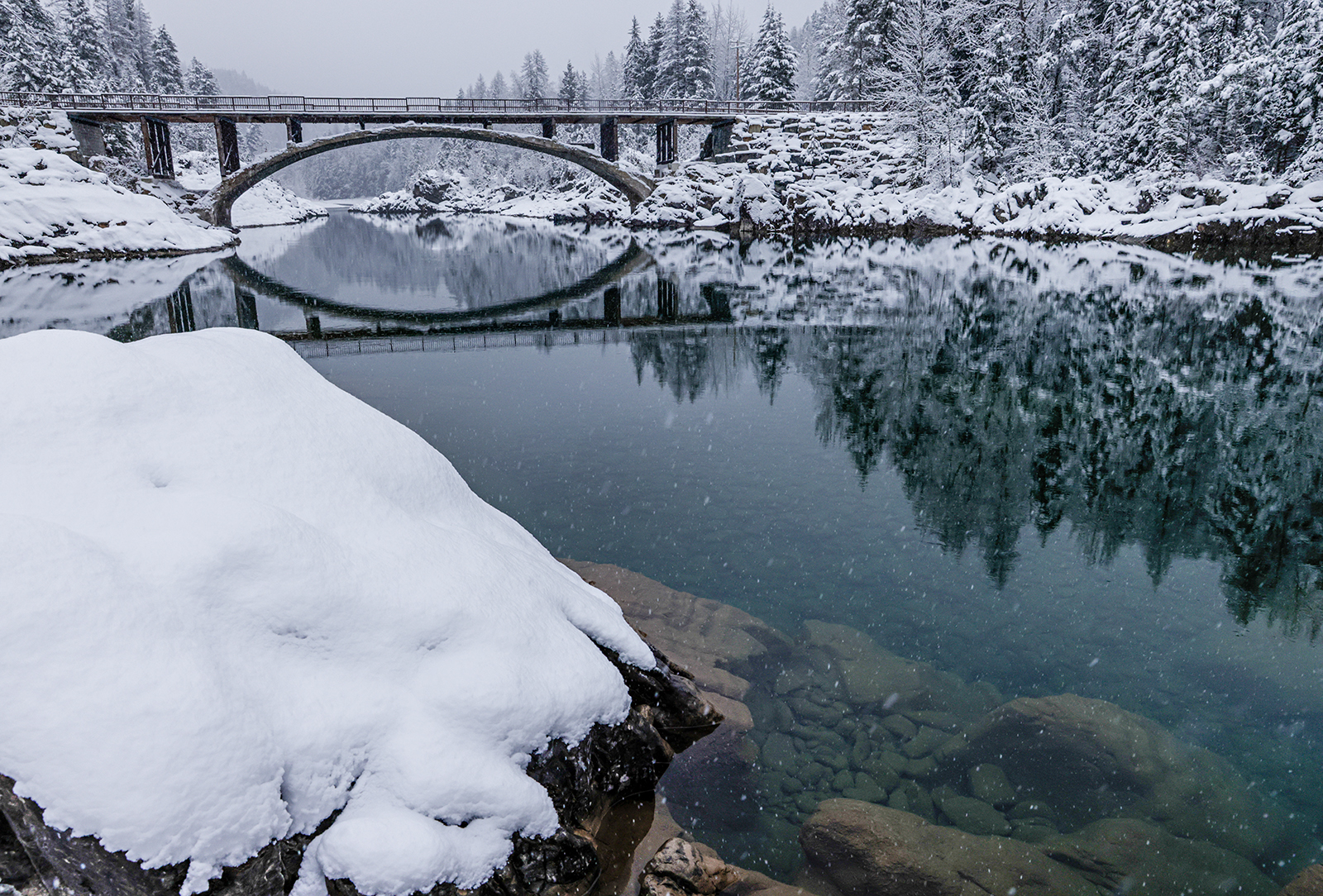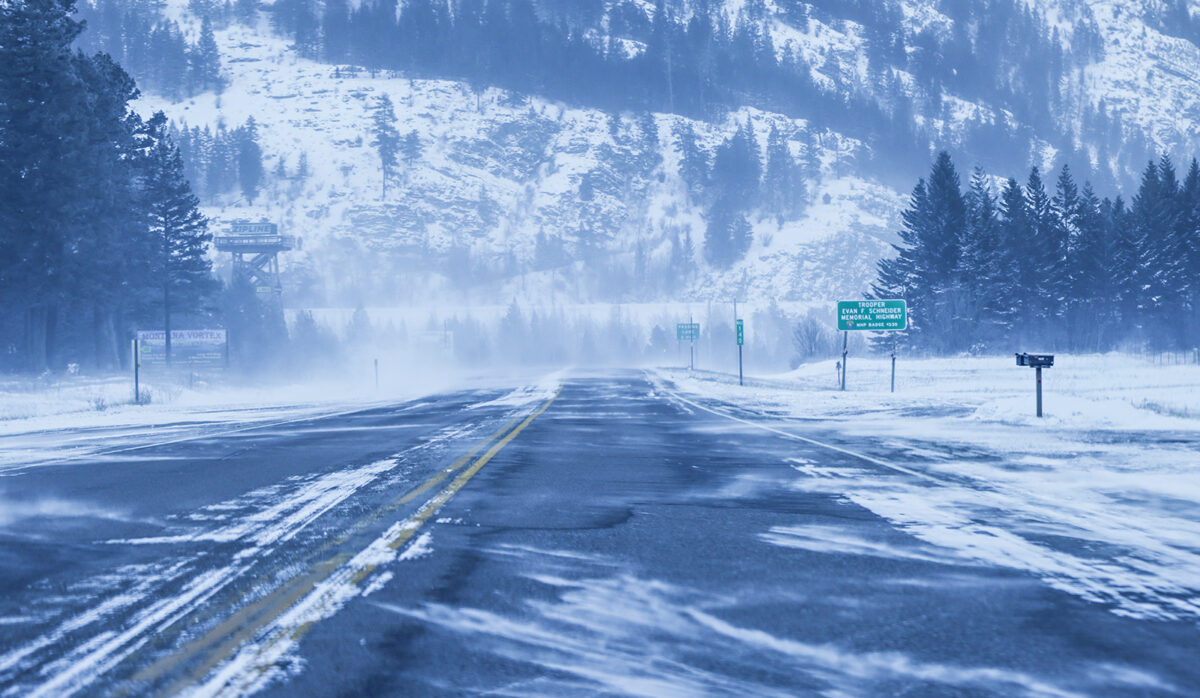With Scant Snow, Glacier Park Reports Sluggish Start to Winter Visitation
Park-wide visitation was down 25% in January, when both snow accumulation totals and temperatures dropped to the lowest West Glacier has recorded in decades
By Tristan Scott
In January, when Glacier National Park typically transforms into a winter wonderland favored by cross-country skiers and snowshoers, visitation dropped by nearly 25% compared to the year prior, registering the lowest figures at the park’s most popular entrance in a half-decade. The temperatures dropped, too, rewriting the record books and forcing even the hardiest winter warriors indoors as an Arctic front lingered over northwest Montana for a week.
Meanwhile, snow accumulations were so skimpy, they barely topped out at 60% of average, exposing the blacktop along lower sections of the Going-to-the-Sun Road near Lake McDonald, which is normally blanketed in snow and scored with ski tracks. Across the state, weather telemetry sites recorded either the lowest or second-lowest snowpacks ever, portending a dry summer while wringing the fun out of winter.
According to Natural Resources Conservation Service (NRCS) data, the SNOTEL sensor at Flattop Mountain above West Glacier recorded just 38 inches of precipitation this January, compared to 66 inches in January 2023 and 80 inches in January 2022. Measured in snow water equivalent (SWE), which denotes how much water is contained in the snowpack, the NRCS instrument revealed SWE totals were just 60% of average.
Similarly, snowfall totals were down in December, with a mere 26 inches recorded at Flattop Mountain, compared to 44 inches the year prior.

Despite those dramatic deficits, the Flathead and Kootenai river basins have consistently led the state in snowpack. According to the U.S. Drought Monitor, 23 Montana counties currently have a U.S. Department of Agriculture drought disaster designation, including Flathead County. The monitor shows 100% of the county’s population is affected by the “severe drought.”
Occurring in a region of Montana where sectors of the economy are closely tied to outdoor winter recreation, the confluence of extreme environmental factors prompted a steep drop in visitation not only to the park, but also to ski areas that typically provide the region’s most remunerative economic base in winter, and an alluring draw to tourists.
Park officials speculate that downward trends in tourism throughout the Flathead Valley in January may have impacted Glacier’s visitation numbers, particularly over holiday weekends that often accommodate an outsized segment of the winter’s tourism economy. Not only were ski areas either closed or operating at a limited capacity during the Christmas and New Year’s holidays, but a stretch of sub-zero temperatures over the usually busy Martin Luther King Jr. (MLK) holiday weekend further dampened visitation as out-of-market visitors canceled or rescheduled trips.
“Headlines have indicated winter tourism is down, especially due to our lack of snow in December and then frigid January temperatures over the MLK Holiday weekend,” according to Glacier Park spokesperson Gina Icenoggle, who said the latest visitation figures released last week indicate that 13,130 visitors arrived at Glacier’s gates in January 2024, compared to 17,411 the year prior. Even though the Going-to-the-Sun Road was closed to winter recreation last winter due to ongoing construction to complete the Lake McDonald Utilities Project, many visitors opted to recreate in Polebridge, where year-over-year visitation jumped by 32% in 2023.
That’s not the case this year, Icenoggle said, providing more statistical evidence to the theory that a scant snowpack has eroded tourism numbers across the region.
“Overall, our January visitation for 2024 is more in line with 2019,” Icenoggle added. “Our winter visitation to Polebridge in January of 2024 is lower than 2021, 2022, and 2023 and is closer to what it was in 2019. Our West Entrance numbers also look more comparable to January 2019 rather than 2022 and 2023.”
The lower visitation to the Flathead Valley this winter tracks with other resort communities in the West. According to data provided by Explore Whitefish, short-term rental occupancy in Whitefish was down around 13% in December and January, similar to an 11% and 23% drop in Sun Valley, Idaho, and a 9.5% and 12% drop in Jackson Hole over the same respective months.
And while February featured fewer radical weather swings than the month prior, allowing outdoor enthusiasts to ease back into their favorite activities, business leaders don’t anticipate it providing the boost they need to level up this season.